Results
-
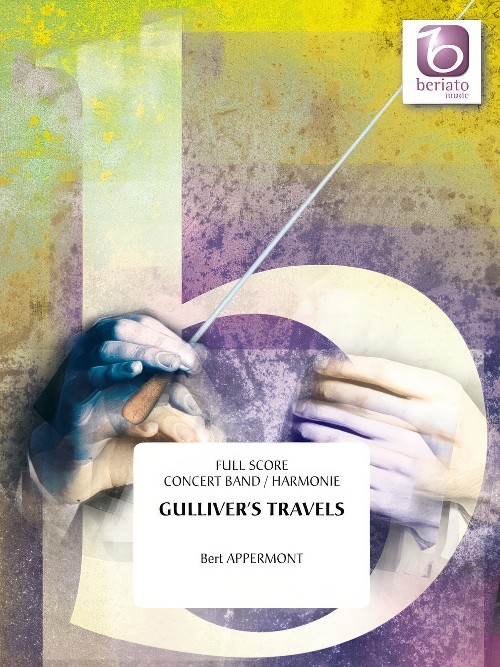 £134.99
£134.99Gulliver's Travels (Concert Band - Score and Parts) - Appermont, Bert
The book Gullivers Travels (1726) by author Jonathan Swift formed the provocation for writing this composition. Even though this composition isnt a literal representation of the original story, a number of elements were still retained. The ships doctor Gulliver finds himself in 4 (fictive) areas, each with their own inhabitants and customs. Each part of this suite also received the name of one of these areas:I. Lilliput The enterprising Lilliputians are represented by a playful, common theme in the first part.II. BrobdingnagIn the land of "Brobdingnag" Gulliver is carried off by gigantic giants, which you hear approaching with the sounds of the bassinstruments. The same theme is constantly repeated and quickened in order to increase the tension.III. LaputaLaputa is an island that floats in the air; its inhabitants are strange people with slanting heads. The dreamy, special atmosphere is especially well conveyed here.IV. The HouyhnhnmsFinally Gulliver finds himself in the land of the Houyhnhnms, where intelligent and noble horses rule over the primitive, undeveloped people (yahoos). The trumpets in the brilliant opening express the galloping horses; the gallant theme that follows (horns and trombones) symbolises the primitive yahoos. The whole composition ends with a big finale.I intentionally tried to limit the degree of difficulty of Gullivers Travels. Despite this I think that this work can appeal to many orchestras due to the colourful orchestration (cues are provided where needed), the simple and clear theme and the highly imaginative breeding ground of a beautiful story around which this composition is built." Duration: 8:00
Estimated dispatch 7-14 working days
-
 £134.99
£134.99Gulliver's Travels - Bert Appermont
The book Gullivers Travels (1726) by author Jonathan Swift formed the provocation for writing this composition. Even though this composition isnt a literal representation of the original story, a number of elements were still retained. The shipsdoctor Gulliver finds himself in 4 (fictive) areas, each with their own inhabitants and customs. Each part of this suite also received the name of one of these areas:I. Lilliput The enterprising Lilliputians are represented by a playful, common themein the first part.II. BrobdingnagIn the land of "Brobdingnag" Gulliver is carried off by gigantic giants, which you hear approaching with the sounds of the bassinstruments. The same theme is constantly repeated and quickened in order to increase thetension.III. LaputaLaputa is an island that floats in the air; its inhabitants are strange people with slanting heads. The dreamy, special atmosphere is especially well conveyed here.IV. The HouyhnhnmsFinally Gulliver finds himself in the land of theHouyhnhnms, where intelligent and noble horses rule over the primitive, undeveloped people (yahoos). The trumpets in the brilliant opening express the galloping horses; the gallant theme that follows (horns and trombones) symbolises the primitiveyahoos. The whole composition ends with a big finale.I intentionally tried to limit the degree of difficulty of Gullivers Travels. Despite this I think that this work can appeal to many orchestras due to the colourful orchestration (cues areprovided where needed), the simple and clear theme and the highly imaginative breeding ground of a beautiful story around which this composition is built."
Estimated dispatch 7-14 working days
-
 £118.99
£118.99Inferno - Sven Van Calster
On 25th May 2011 a huge fire broke out in the Kalmthoutse Heath nature reserve north of Antwerp. Within a very short time more than 600 hectares of heath land went up in flames. The effect on the surrounding environment was huge. The fire left deepscars affecting the residents, those responsible for heath land, and also the members of the fire brigade who for several days risked their lives to fight the fire.The composition Inferno begins majestically and on a huge scale, exactly as theKalmthoutse Heath is. Soon a theme is introduced into the work in which the magnificent beauty of nature can be heard. We then hear the fires on the heath set to music. Even thefire helicopter can be heard, together with the first discussions thattook place after the alarm was raised with the Kalmthoutse fire brigade.One fact remains at the centre of this work, however: the natural beauty and splendour of the heath landscape. This is expressed at the start of the work in a theme that recursthroughout the piece. Towards the end it is finally replaced by a peaceful conclusion, representing the hope for a speedy regeneration of this wonderful nature reserve. Download the audio file from the 'Attachments'.
Estimated dispatch 7-14 working days
-
 £71.50
£71.50Hymn For The King Of The House Of Silverbow - Barry E. Kopetz
Here is a musical representation of the King journeying to the Land of the Lochrians after being held in captivity for many years in the Land of Aeolia. The final section, Royal Hymn, is a setting of the hymn tune always played when there is an appearance of the King. It had not been performed since his disappearance.
Estimated dispatch 7-14 working days
-
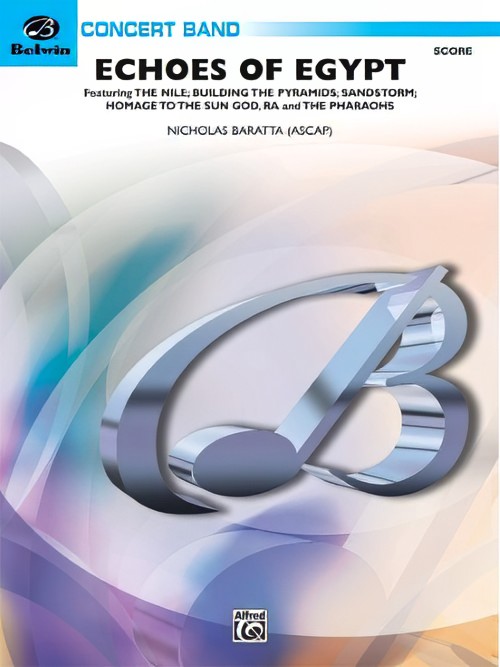 £66.95
£66.95Echoes of Egypt (Concert Band - Score and Parts) - Baratta, Nicholas
Travel musically to a land far away. Echoes of Egypt joins five components of this mystical land. "The Nile" is depicted with African percussion setting the stage for the flow of that historic body of water. The magnificent construction of the pyramids is presented as well as sounds from a sandstorm. The epic work concludes paying homage to the Pharaohs.Duration: 6.30
Estimated dispatch 7-14 working days
-
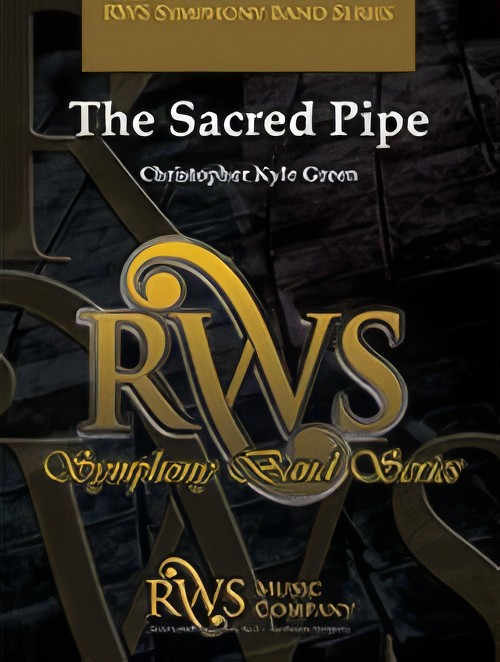 £150.00
£150.00The Sacred Pipe (Concert Band - Score and Parts) - Green, Christopher Kyle
A mysterious work, The Sacred Pipe is the musical endeavor of a Native Cherokee myth. Extravagant melodic lines, tender harmonies, fast and intense tempos, and majestic fanfares ensure a film-like experience for the audience. Join the "Arrow Woman" on her journey through the land, as she fights against the norms of her tribe. The Scared Pipe hopes to convey a musical journey that engulfs the grandiosity of the land, the majesty of mountains, and purity of water. Duration: 8.45
Estimated dispatch 7-14 working days
-
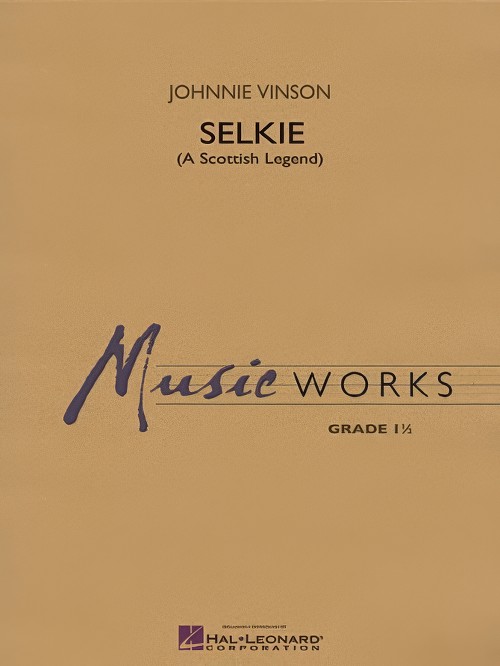 £42.50
£42.50Selkie (A Scottish Legend) (Concert Band - Score and Parts) - Vinson, Johnnie
In Celtic folklore, a "selkie" is a mythical creature appearing as a seal in water, but taking human form on land. In this striking setting, the first movement, in a lyric and melancholy style, portrays the selkie as a baby seal. The second movement depicts a young boy on land and employs a number of characteristics of traditional Scottish folk tunes. This marvellous work provides opportunities for musical and cross-curricular exploration.Duration: 3:50
Estimated dispatch 7-14 working days
-
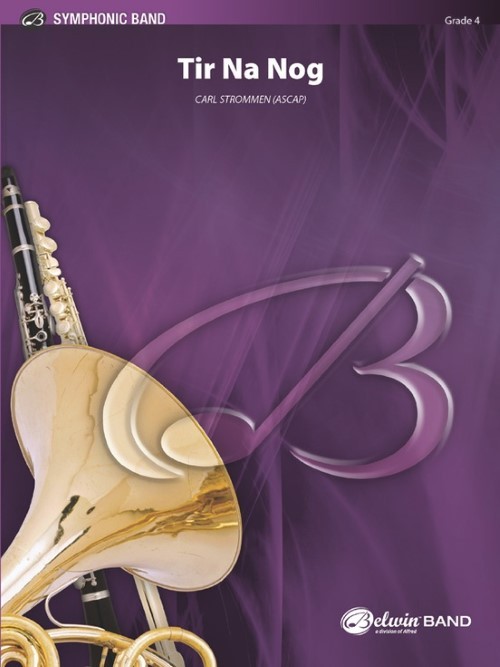 £82.95
£82.95Tir Na Nog (A Celtic Legend) (Concert Band - Score and Parts) - Strommen, Carl
Fingers fly right from the start in this original composition. High energy is characteristic throughout the work. Subtitled "A Celtic Legend," this work carries the contemporary concert band back to the old country. Inspired by the mythical Celtic other-worlds, usually identified as an island west of Europe, the title translates to "Land of Youth" or "Land of the Young People." Duration: 4.30
Estimated dispatch 7-14 working days
-
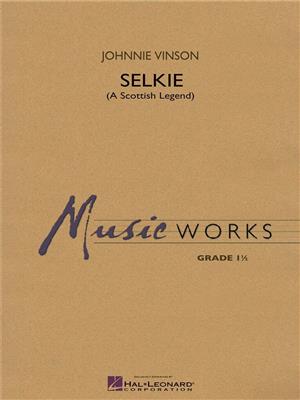 £42.50
£42.50Selkie - Johnnie Vinson
In Celtic folklore, a selkie is a mythical creature appearing as a seal in water, but taking human form on land. In this striking setting for second-year players the first movement, in a lyric and melancholy style, portrays theselkie as a baby seal. The second movement depicts a young boy on land and employs a number of characteristics of traditional Scottish folk tunes. This marvelous work provides opportunities for musical and cross-curricularexploration. Dur: 3:50
Estimated dispatch 7-14 working days
-
£150.00
The Sacred Pipe - Green
A mysterious work, The Sacred Pipe is the musical endeavor of a Native Cherokee myth. Extravagant melodic lines, tender harmonies, fast and intense tempos, and majestic fanfares ensure a film-like experience for the audience. Join the "Arrow Woman" on her journey through the land, as she fights against the norms of her tribe. The Sacred Pipe hopes to convey a musical journey that engulfs the grandiosity of the land, the majesty of mountains, and the purity of water.
Estimated dispatch 7-14 working days
